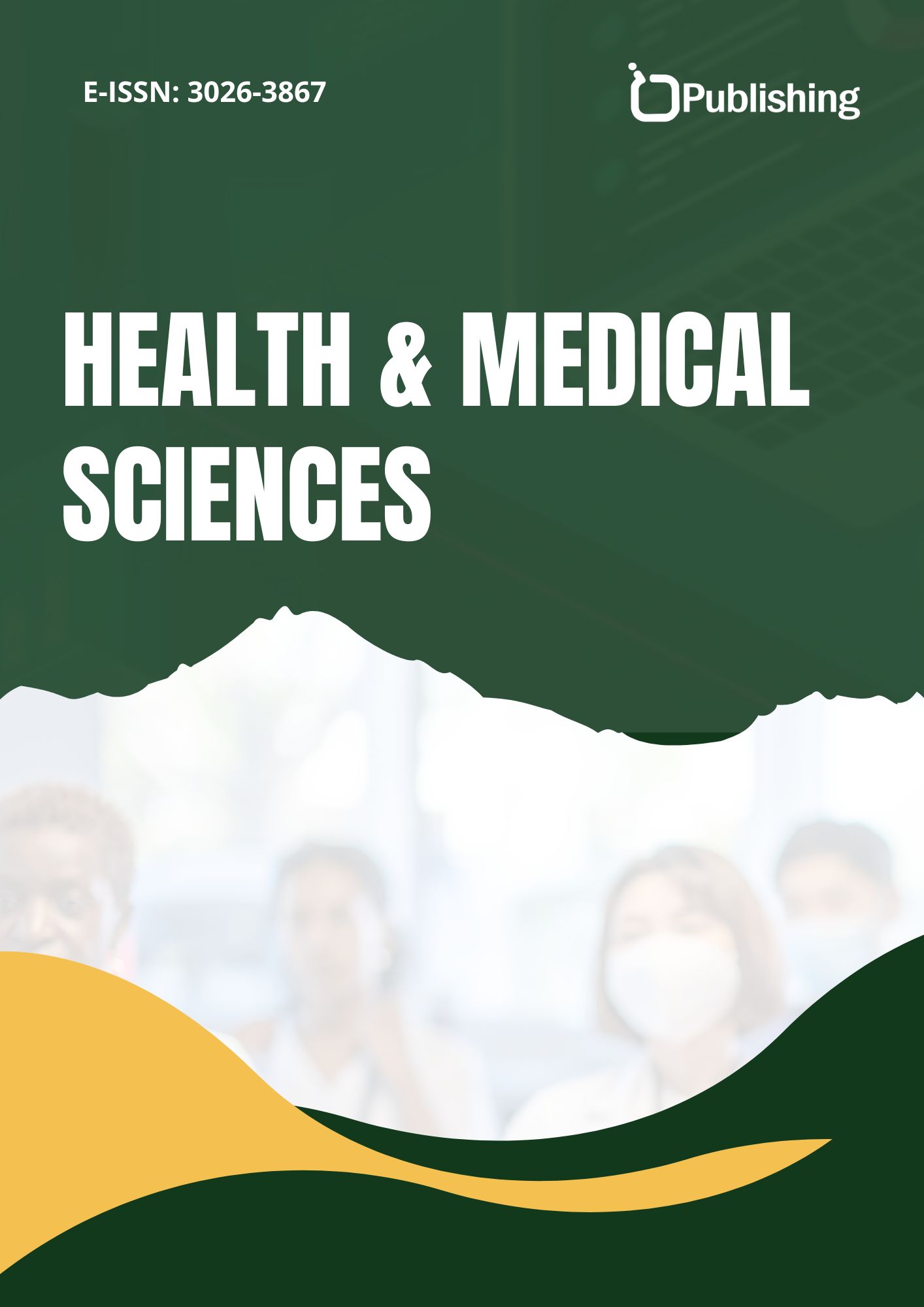Asuhan Keperawatan dengan Gangguan Mobilitas Fisik pada Klien CVA Infark (Cerebrovaskuler Accident)
DOI:
https://doi.org/10.47134/phms.v1i4.53Keywords:
Asuhan Keperawatan, CVA Infark, Hambatan Mobilitas FisikAbstract
Cerebrovascular accident (CVA) infark adalah penyakit yang terjadi ketika Berhentinya pasukan darah yang menuju otak terganggu atau bahkan berkurang sehingga bisa Mengakibatkan jaringan otak mengalami kekurangan oksigen dan nutrisi. Penyakit ini dapat mengancam nyawa seseorang sehingga menyebabkan kecacatan yang permanen dalam otak. CVA meingakibatkan keirusakan disuatu bagian otak, diantaranya seipeirti gangguan mobilitas fisik. Gangguan mobilitas fisik meirupakan proseis keitika meinurunnya geirakan fisik pada tubuh seihingga meingakibatkan keiteirbatasan baik satu maupun leibih pada eikstrimitas. Desain penelitian ini menggunakan metode deskriptif. Partisipan yang digunakan adalah 2 klien yang didiagnosis medis CVA infark dengan masalah gangguan mobilitas fisik. Data yang dikumpulkan yaitu hasil wawancara, observasi, dan dokumentasi. Hasil peneleitian dari pengkajian Tn. B dan Ny. S mengalami sulit menggerakkan ekstermitas sebelah kiri, diagnosis keperawatan pada TN. B dan Ny. S adalah gangguan mobilitas fisik berhubungan dengan keirusakan neiuromuscular yang diitandaii deingan gangguan neiuromotoriik pada kliiein, intervensi keperawatan yang dilakukan adalah dukungan mobillisasi kepada pasien, implementasi keperawatan dilakukan selama 3x24 jam kepada ke dua pasien dan didapatkan evaluasi keperawatan terhadap klien 1 dan 2 setelah dilakukan asuhan keperawatan pergerakan ektermitas, kekuatan otot dan ROM meningkat dapat mencapai skor yang di targetkan. Kesimpulan dari penelitian ini intervensi dukungan mobilisasi tepat diberikan pada pasien stroke dengan masalah keperawatan ganggua mobilitas fisik, hal ini dibuktikan dengan tercapainya skor target yang ditentukan.
References
A., R. (2021). Gambaran asuhan keperawatan pada klien gangguan system persarafan (studi kasus pada klien Tn. S dengan stroke non hemoragik : resiko refuse jaringan serbral tidak efektif di ruang sappier RS Universitas Tanjung Pora Kota Pontianak tahu 2021.
Agaronnik, N. D. (2022). Implications of Physical Access Barriers for Breast Cancer Diagnosis and Treatment in Women With Mobility Disability. Journal of Disability Policy Studies, 33(1), 46–54. https://doi.org/10.1177/10442073211010124
Bakhtiary, F. (2020). Development and Validation of a Tool for Assessing Barriers to Participation in Team Sports for Women with Physical-Mobility Disabilities. Annals of Applied Sport Science, 8, 1–12. https://doi.org/10.29252/aassjournal.809
Black, L. (2022). Physical and Environmental Barriers to Mobility and Participation in Children With Medical Complexity: A Qualitative Study. Clinical Pediatrics, 61(10), 717–726. https://doi.org/10.1177/00099228221099097
de la Viuda, S. (2019). Treatment of cerebrovascular accidents in posterior territory. FMC Formacion Medica Continuada En Atencion Primaria, 26(3), 168–178. https://doi.org/10.1016/j.fmc.2018.02.011
Duan, Y. (2022). Effects of left atrial appendage surgical treatment on the incidence of ischemic cerebrovascular accidents in patients with atrial fibrillation undergoing cardiac surgery. Journal of Thoracic and Cardiovascular Surgery, 164(4), 1106–1116. https://doi.org/10.1016/j.jtcvs.2020.09.139
Eva, C. C. G. (2018). Physiotherapeutic treatment of unilateral neglect secondary to a cerebrovascular accident. Archivos de Neurociencias, 23(2), 42–59.
Gamzaev, A. B. (2022). Surgical treatment of high-risk pulmonary embolism associated with pa radoxical embolism, complicated by acute cerebrovascular accident. Grekov’s Bulletin of Surgery, 181(3), 69–75. https://doi.org/10.24884/0042-4625-2022-181-3-69-75
Hannonen, O. (2022). Physical access and perceived constraints: Borders as barriers to travel mobilities and tourism development. Routledge Handbook of Borders and Tourism, 112–125. https://doi.org/10.4324/9781003038993-11
Ilkhani, M. (2018). The effect of low-frequency repetitive transcranial magnetic stimulation (rTMS) on the treatment of aphasia caused by cerebrovascular accident (CVA). Medical Journal of the Islamic Republic of Iran, 32(1), 1–5. https://doi.org/10.14196/mjiri.32.25
Kamarudin, H. (2022). Identifying physical barriers through a real-life experience with mobility difficulties city travelers: a go-along interview method. IOP Conference Series: Earth and Environmental Science, 1067(1). https://doi.org/10.1088/1755-1315/1067/1/012008
Kerzhner, T. (2018). Physical walls, invisible barriers: Palestinian women’s mobility in Jerusalem. Regional Science Policy and Practice, 10(4), 299–314. https://doi.org/10.1111/rsp3.12162
Kevdzija, M. (2018). Physical barriers to mobility of stroke patients in rehabilitation clinics. Breaking Down Barriers: Usability, Accessibility and Inclusive Design, 147–157. https://doi.org/10.1007/978-3-319-75028-6_13
Martsevich, S. Y. (2018). Hospital register of patients with acute cerebrovascular accident (REGION): Characteristics of patient and outcomes of hospital treatment. Cardiovascular Therapy and Prevention (Russian Federation), 17(6), 32–38. https://doi.org/10.15829/1728-8800-2018-6-32-38
Notoadmojo, S. (2018). Metodologi Penelitian Kesehatan. Rineka Cipta.
Okshina, E. Y. (2019). Patients with history of myocardial infarction and acute cerebrovascular accident in clinical practice: Demographic, clinical characteristics, drug treatment and outcomes (Data of Outpatient and Hospital Registry REGION). Rational Pharmacotherapy in Cardiology, 15(5), 656–662. https://doi.org/10.20996/1819-6446-2019-15-5-656-662
Portegijs, E. (2020). Older Adults’ Physical Activity and the Relevance of Distances to Neighborhood Destinations and Barriers to Outdoor Mobility. Frontiers in Public Health, 8. https://doi.org/10.3389/fpubh.2020.00335
Rizeki D, F., & Arista, M. (2020). Standar Luaran Keperawatan Indonesia Definisi dan Indikator Diagnostik. Dewan Pengurus PPNI.
Rosales, J. S. (2020). Effect of the covid-19 pandemic and preventive social isolation measures on the number of outpatient visits, hospitalizations and treatment of cerebrovascular accident in a neurologi cal center in argentina. Medicina (Argentina), 80, 65–70.
Sholeh N, A. (2019). Asuhan Keperawatan Pada Klien Cerebral Vascular Acident Infark Dengan Masalah Keperawatan Defisit Perawatan Diri Di RSUD Bangil Pasuruan. Stikes Icme Jombang.
Úbeda-Colomer, J. (2018). Validation of a short spanish version of the instrument barriers to physical activity questionnaire for people with mobility impairments. Salud Publica de Mexico, 60(5), 539–548. https://doi.org/10.21149/8541
Vasudeva, P. (2021). Neurological safety and efficacy of darifenacin and mirabegron for the treatment of overactive bladder in patients with history of cerebrovascular accident: A prospective study. Neurourology and Urodynamics, 40(8), 2041–2047. https://doi.org/10.1002/nau.24793
Downloads
Published
How to Cite
License
Copyright (c) 2023 Health & Medical Sciences

This work is licensed under a Creative Commons Attribution 4.0 International License.










